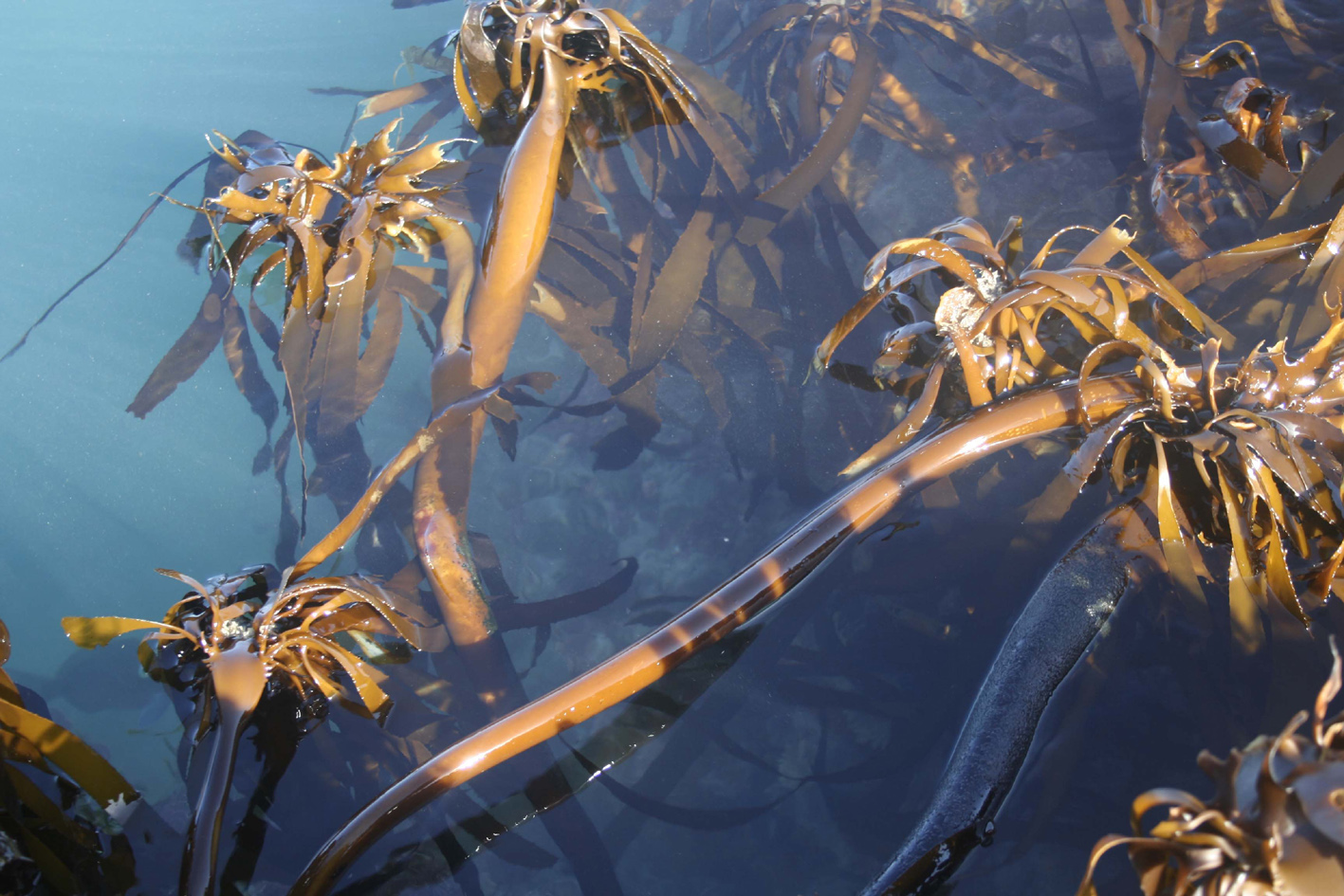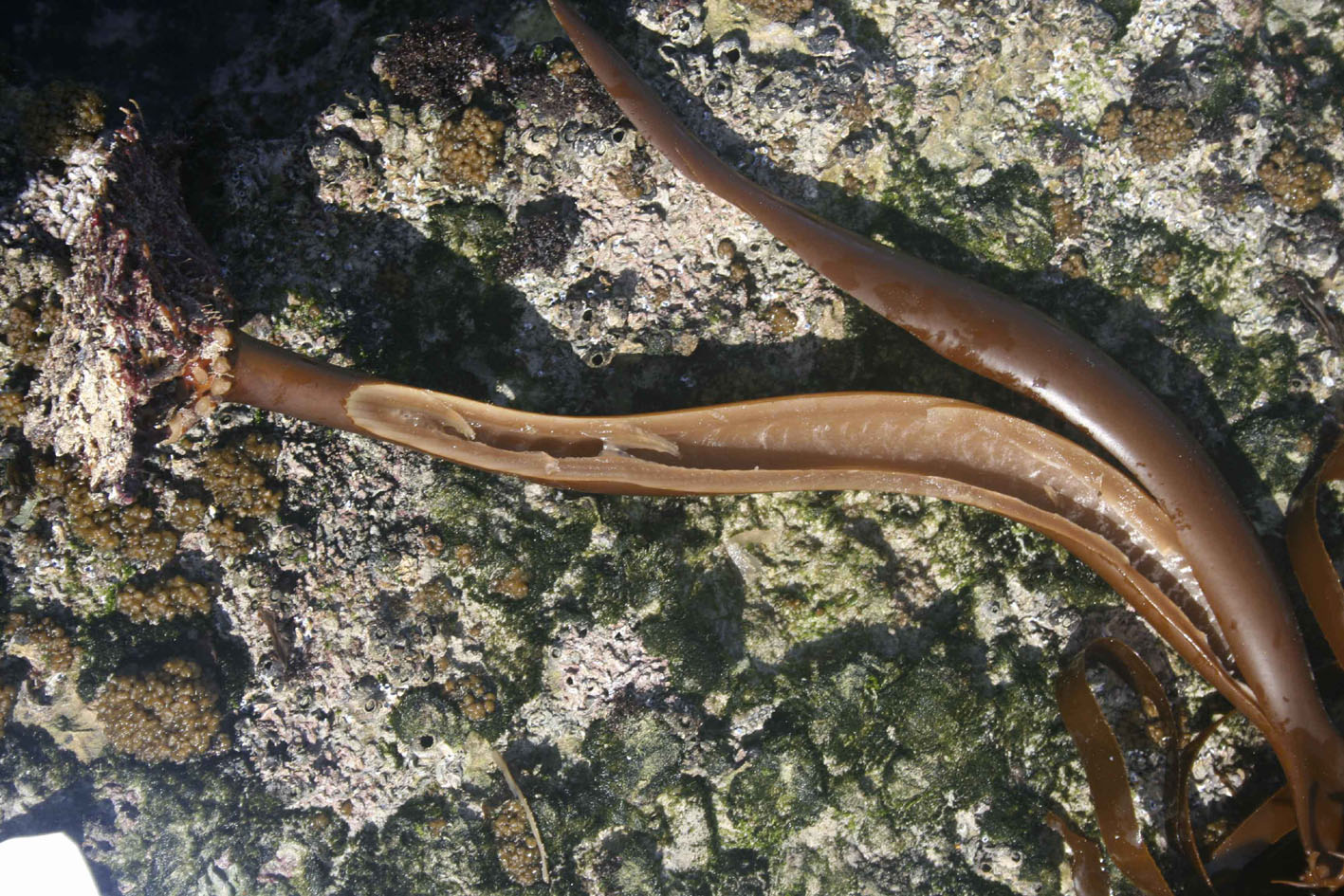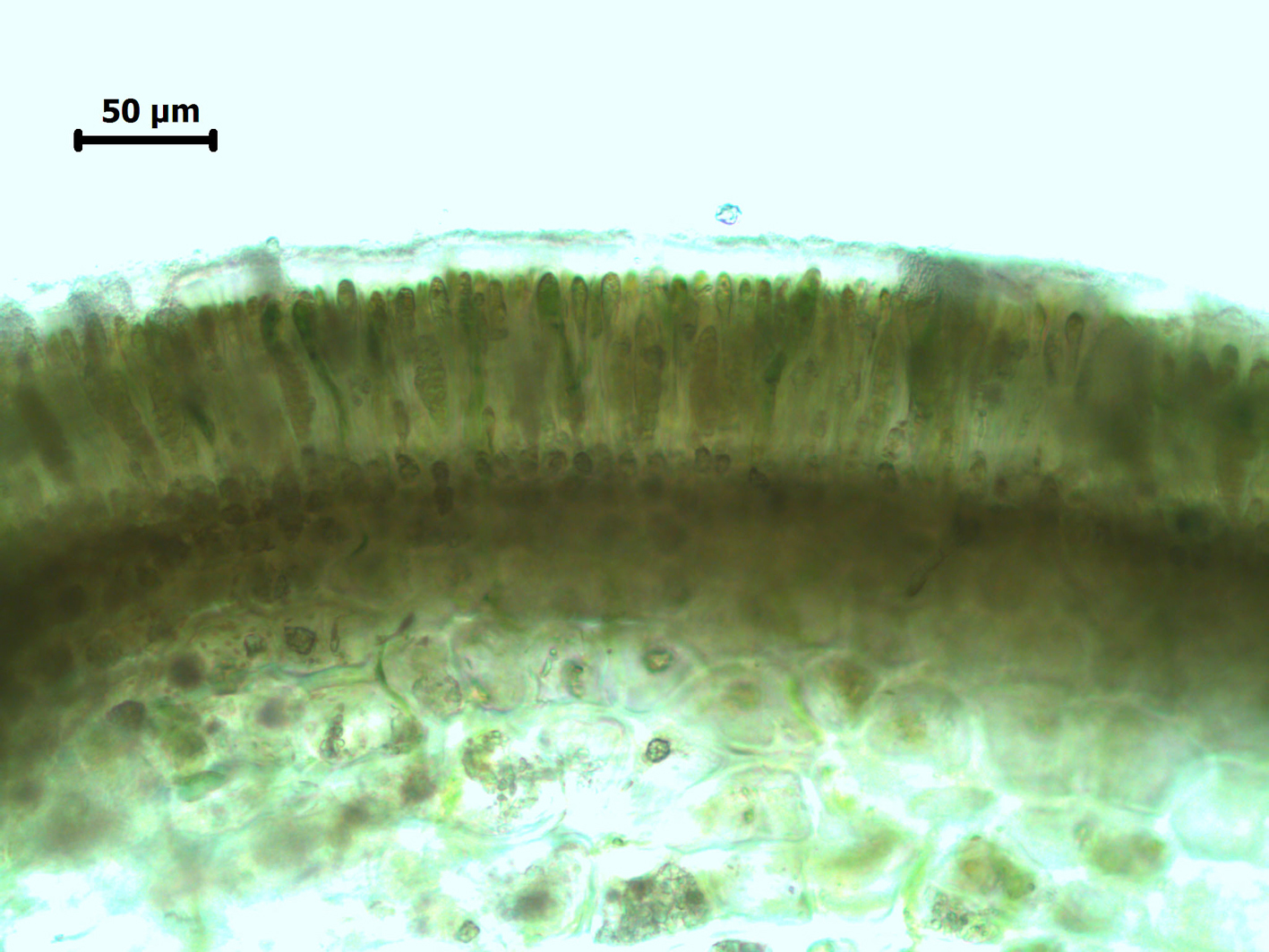Seaweeds of the South African South Coast


Order Laminariales
Family Lessoniaceae
Ecklonia maxima (Osbeck) Papenfuss 1940: 7
Sporophyte up to about 4 m tall (to at least 10 m on west coast), comprising well-developed holdfast of branched haptera, elongated cylindrical stipe up to 1.5 m long (to 10 m on west coast) with gas-filled bulb near top, and short triangular primary blade bearing marginal secondary blades. Blades smooth, margins lightly dentate; young primary blade strap-shaped, up to 1 m long, flexuous, becoming shorter, rigid and triangular in mature specimens. Secondary blades arising bilaterally, sometimes bearing some tertiary blades in older plants. Mucilage ducts present in stipes and blades. Plurilocular sporangia in raised sori in patches or strips near centre of secondary blades. Gametophytes filamentous, microscopic.
Collections, ecology and regional distribution
A dominant west coast species that forms extensive kelp beds from just north of Luderitz in Namibia to Papenkuilsfontein about 10 km west of Cape Agulhas, and very recently recorded also from Koppie Alleen, De Hoop, indicating a recent range extension of some 70 km (Bolton et al. 2012). The hollow stipe and gas-filled bulb enable detached sporophytes to float long distances: large specimens have been cast ashore as far east as Port Alfred. Drift plants have been seen as far as Tristan da Cunha (Stegenga et al. 1997).
World distribution
Also recorded from St Helena, The Falklands, St. Paul and the Auckland Islands (M.D. Guiry in Guiry & Guiry 2014), although Papenfuss (1942b) considered most of these old records unlikely.
Type locality: “Cape of Good Hope” (Silva et al. 1996).
Note: The only attached Ecklonia maxima known to occur on the south coast is the one small population that has appeared relatively recently at De Hoop (see Bolton et al. 2012 for further details).

Ecklonia maxima, Koppie Alleen, De Hoop, 2010.

Ecklonia maxima, De Hoop specimen showing the hollow stipe typical of this species.

Ecklonia maxima, cross section through fertile soral area of sporophyte blade (False Bay specimen).
References Ecklonia maxima
Bolton, JJ, Anderson, RJ, Smit, AJ and MD Rothman. 2012. South African kelp moving eastwards: the discovery of Ecklonia maxima (Osbeck) Papenfuss at De Hoop Nature Reserve. Short communication. African Journal of Marine Science 34: 147-151.
M.D. Guiry in Guiry, M.D. & Guiry, G.M. 2014. AlgaeBase. World-wide electronic publication, National University of Ireland, Galway. http://www.algaebase.org; searched on 11 September 2014.
Papenfuss, G.F. (1940). A revision of the South African marine algae in herbarium Thunberg. Symbolae Botanicae Upsalensis 4(3): 1-17.
Papenfuss, G. F. (1942b). Studies of South African Phaeophyceae: Ecklonia maxima, Laminaria pallida, and Macrocystis pyrifera. American journal of Botany 29: 15-24.
Silva, P.C., Basson, P.W. & Moe, R.L. (1996). Catalogue of the benthic marine algae of the Indian Ocean. University of California Publications in Botany 79: 1-1259.
Stegenga, H., Bolton, J.J. and R. J. Anderson. 1997. Seaweeds of the South African west coast. Contributions from the Bolus Herbarium 18: 655 pp.
Cite this record as:
Anderson RJ, Stegenga H, Bolton JJ. 2016. Seaweeds of the South African South Coast.
World Wide Web electronic publication, University of Cape Town, http://southafrseaweeds.uct.ac.za; Accessed on 07 January 2026.